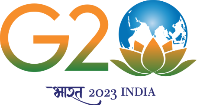Laboratory
For successful implementation of various environmental protection/management programmes, it is necessary to identify the pollution sources, conduct baseline surveys, lay down standards and build up monitoring systems. The laboratory plays a vital role for proper assessment status of an area/ a polluting source and helps in taking the required abatement measures.
The Nagaland Pollution Control Board is functioning with a ‘C’ grade laboratory and is in the process of upgradation to a higher grade. At present the laboratory is equipped with instruments to analyze air, water and soil.
A list of parameters analysed in the Laboratory together with the methodology used for analysis with available instruments are mentioned below:
Methodology Employed for Analysis of Water Samples:
(A) Physical Parameters
| Sl. No. | Parameters | Method |
| 1 | pH | pH Meter |
| 2 | Conductivity | Conductivity Meter |
| 3 | TDS | Gravimetric |
| 4 | TSS | Gravimetric |
| 5 | Colour | – |
| 6 | Temperature | Thermometer |
| 7 | Turbidity | Nephelometric |
(B) Chemical Parameters
| Sl. No. | Parameters | Method |
| 1 | Acidity | Color Indicator titration |
| 2 | Alkalinity | Color Indicator titration |
| Phenolpthalien Alkalinity | Color Indicator titration | |
| 3 | Biochemical Oxygen Demand | Three day BOD at 27 degree Celsius |
| 4 | Chemical Oxygen Demand | |
| 5 | Total Kjeldahl Nitrogen | |
| 6 | Nitrate | UV spectrophotometer using test kit |
| 7 | Ammonical Nitrogen | |
| 8 | Chloride | Titrimetric (Argentometric) |
| 9 | Dissolved Oxygen | Winkler titrimetric-azide-modification (Iodometric) |
| 10 | Total Hardness | Titrimetric (EDTA) |
| 11 | Calcium | Titrimetric (EDTA) |
| 12 | Magnesium | By difference (between total hardness and calcium determined titrimetrically) |
| 13 | Phosphate | a. Orthophosphate-Pretreatment followed by Colorimetric (Stannous-Chloride or Vanadium Molybdate)
b. Polyphosphate -do- c. Total -do- |
| 14 | Sodium | Flame photometer |
| 15 | Potassium | UV spectrophotometer using test kit |
| 16 | Sulphate | UV spectrophotometer using test kit |
| 17 | Iron | UV spectrophotometer using test kit |
| 18 | Flouride | UV spectrophotometer using test kit |
| 19 | Copper | UV spectrophotometer using test kit |
| 20 | Chromium | UV spectrophotometer using test kit |
| 21 | Zinc | UV spectrophotometer using test kit |
| 22 | Nickel | UV spectrophotometer using test kit |
| 23 | Arsenic | UV spectrophotometer using test kit |
| 24 | Lead | UV spectrophotometer using test kit |
| 25 | Boron | UV spectrophotometer using test kit |
| 26 | Cadmium | UV spectrophotometer using test kit |
Apart from analysis of water pollutants, the Board is also equipped to analyze air samples. The parameters with their method of estimation are given below:
| Sl. No. | Parameters | Method |
| 1 | Respirable Suspended Particulate Matter | Respirable Particulate Matter Sampler |
| 2 | Suspended Particulate Matter | High Volume Sampling |
| 3 | Nitrogen dioxide | Sodium Arsenite Method |
| 4 | Sulphur dioxide | Modified West and Gaeke Method |
The NPCB also carried out ambient air monitoring in areas where stone crushers are located to study the impact to human health.
Under the air laboratory, vehicular pollution testing for both petrol and diesel is also carried out in an interval for study purpose.
WEATHER MONITORING STATION
Meteorology plays a vital role in the study of air pollution. Thus, for comprehensive air quality management, the NPCB has established an automatic weather monitoring station at its office-cum-laboratory in Dimapur and in Kohima located at Opposite War Cemetery and has started monitoring meteorological parameters viz., temperature, humidity, rainfall, wind speed and wind direction.







